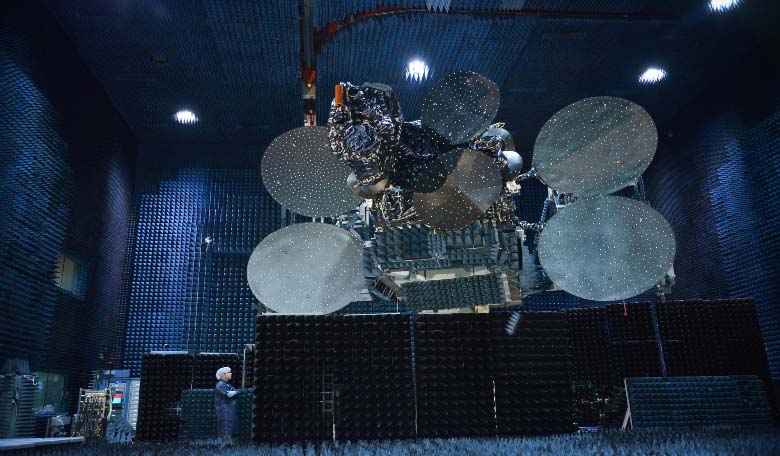On June 10, an International Launch Services Proton rocket placed the Intelsat 31 commercial telecommunications satellite into geostationary transfer orbit. This was the first flight of the Proton rocket after a series of recent upgrades. The Proton M rocket was launched on Thursday from the Baikonur Cosmodrome in Kazakhstan.
The launch was postponed from its initial launch date due to an issue associated with electrical ground system equipment at Launch Pad 24.
The Proton booster that launched Intelsat 31 is 4.1 m (13.5 ft) in diameter along its second and third stages, with a first stage diameter of 7.4 m (24.3 ft). The overall height of the three stages of the Proton booster is 42.3 m (138.8 ft).
International Launch Services vice president for operations John Palme said that the latest Proton upgrades include lighter-weight but stronger structures and high-precision tooling that will allow Proton to launch an extra 150 kilograms into geostationary transfer orbit, bringing the total satellite mass to slightly over 6,300 kilograms.
Proton's Briz-M upper stage was able to compensate for problems with the rocket's second stage (which had underperformed) with a longer burn sequence, and successfully put the satellite in orbit. Roscosmos, the Russian space agency, noted that one of the four second stage engines shut down nine seconds early, causing the lack of performance. From this point in the mission, the Briz-M performed mission maneuvers to advance the orbital unit first to a circular parking orbit, then to an intermediate orbit, followed by a transfer orbit, and finally to a supersynchronous transfer orbit.
Intelsat has reported that the 6,450 kilogram satellite was in orbit and has sent signals after its release, which happened fifteen hours and thirty-one minutes after liftoff.
Intelsat 31 carries a Ku-band payload for Los Angeles-based DirecTV’s Latin America division. DirecTV Latin America will keep Intelsat 31 as an in-orbit spare at 95 degrees west longitude. It will be co-located with the Intelsat 30 satellite (launched in November 2014) and is the principal satellite-television platform for DirecTV Latin America at the 95 degrees west slot.
Intelsat will use the four 69.6-megahertz C-band transponders for its own business in Latin America. Intelsat 31 is designed to provide 20 kilowatts of power to its payload at the end of its 15-year service life and may be in service for 20 or more years.
According to Intelsat, initial indicators showed that the issues with the third-stage should not reduce the satellite's service life.
International Launch Services is based in Virginia, USA, and sells Protons globally for the Russian Khrunichev Space Center. ILS expects the Proton rocket to stay on the market for another decade while the new Russian Angara rocket is introduced. Russian authorities hope that the heavier version of the Angara rocket will replace the Proton by mid-2020s.
International Launch Services has also said that it is planning to modify the Proton rocket in order to allow it to launch pairs of small satellites. The company believes this capability will attract owners of smaller satellite fleets. As the commercial satellite market has divided into lighter and heavier satellites and more satellite owners have began adopting electric propulsion, fleets of all-electric satellites, which can weigh 50 percent less than the those that use conventional chemical propellant, have grown, making this a potentially profitable market segment.











